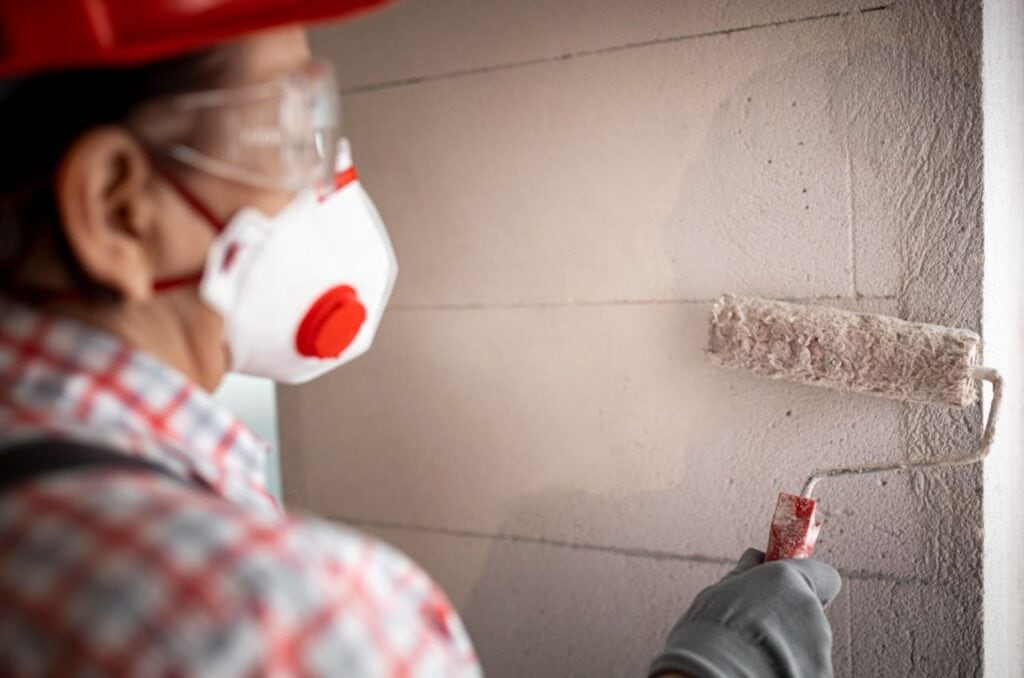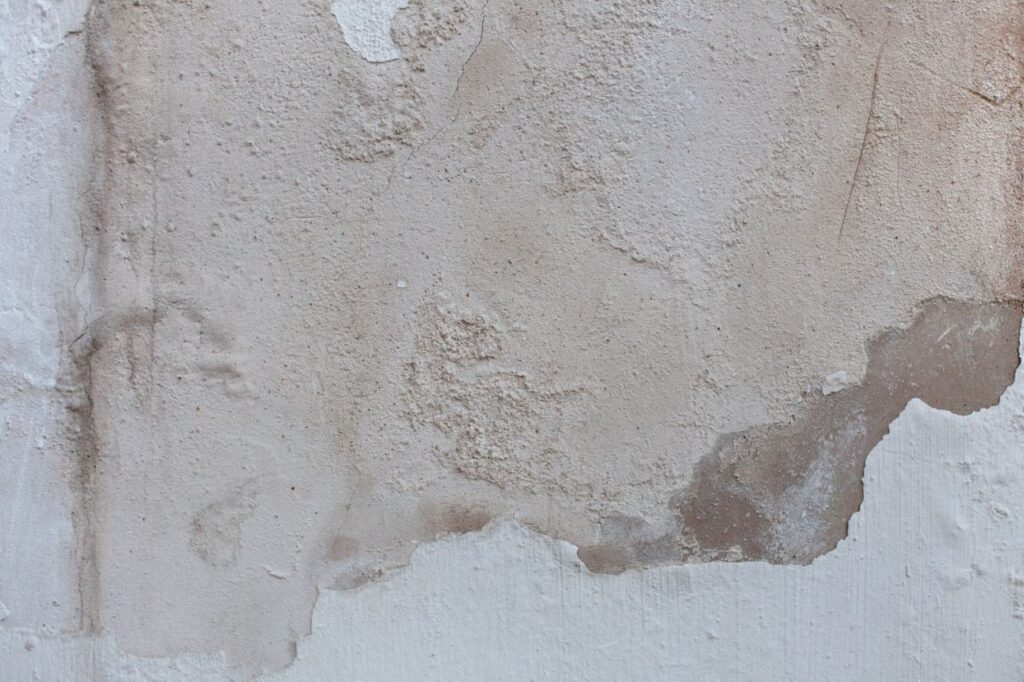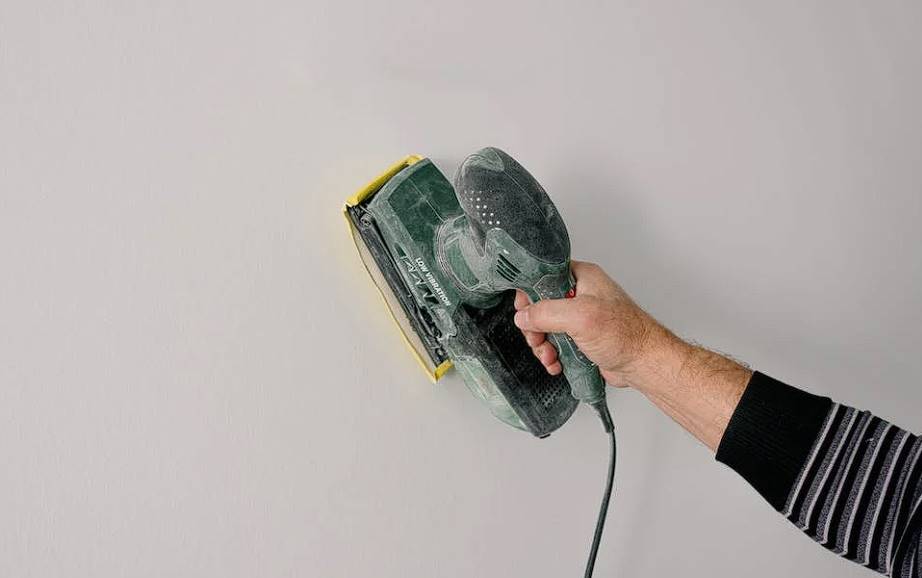Quality of materials, application technique, and long-term wall maintenance are the three most important factors in determining how long plastering lasts. When properly laid, plaster has a long lifespan and rarely requires major repairs. The durability of plaster walls, however, is affected by a number of variables. Plaster, for instance, can deteriorate with time due to exposure to dampness and humidity, resulting in fissures and crumbling. If you want to preserve your plaster walls in good condition, you should clean and dry them regularly and fix any damage as soon as you see it.
If you want to keep your plaster walls in good repair, one thing you should do is check them for damage on a frequent basis. A professional plasterer may be necessary to fix bigger gaps, but a good filler will do the trick for smaller ones. To avoid damage and extend the life of the plaster, it's crucial to keep the walls clean and clear of dirt. If you want your plaster walls to retain their pristine appearance, you should clean them regularly with a gentle brush or vacuum cleaner.
Do not hang heavy things directly on plaster walls; this will help keep the plaster in good condition. Plaster can crack or pull away from the wall if the weight is too much, which can lead to damage. Use wall anchors or brackets to appropriately disperse the weight when hanging heavy objects, like a huge mirror or picture. Also, when you're glueing things to plaster walls, watch out for adhesives that can eventually harm the plaster.
Tell Me How Long A Plaster Wall Will Last.
Walls made of plaster are known to last for a long time, but how long that lasts depends on things like how well they were installed, the weather, and how often they are maintained. In a straightforward and easy-to-understand way, let's investigate how long plaster walls usually survive.
Factors Influencing Lifespan Of Plaster Walls
Installation Quality
The quality of the installation greatly affects how long plaster walls last. Plaster walls, when put up properly by experienced artisans, can endure for decades. Making sure the foundation is stable, utilising high-quality materials, and spreading the plaster uniformly are all parts of a proper installation.
Environmental Conditions
The lifetime of plaster walls is greatly affected by their surrounding environment. Because of its sensitivity to moisture, plaster can be damaged, deteriorate, or even mouldy if exposed to too much water or humidity. On the flip side, living in an airy, dry place helps you live longer.
Structural Settling
Plaster walls can develop tiny fissures as a result of a building's natural settlement. Some settling is inevitable, but major structural problems can hasten the cracking process. The life of plaster walls can be prolonged with proper attention to settling issues and necessary repairs.
Maintenance Practices
Plaster walls can last for a long time with regular upkeep. Immediate repair of small damage, such as cracks or dings, might head off more serious problems. Painting the walls at regular intervals not only gives them a new coat of protection but also makes them seem nicer.
Typical Lifespan Of Plaster Walls
Short Term (0-20 years)
Generally speaking, plaster walls exhibit great resilience and aesthetic appeal in the short term. With proper care, they should easily make it through the first few decades.
Mid-Term (20-50 years)
Hairline cracks could appear in the middle of the expected lifespan due to settling. Plaster walls can retain their integrity and look with regular maintenance and repairs that take care of these small flaws.
Long Term (50+ years)
Once plaster has attained the long-term threshold, it can continue to withstand the elements. Plaster walls, with proper care, can endure for decades, even beyond 50 years, with the occasional bigger repair or restoration job.
Why Does Plaster Crack?
Plaster that has seen better days tends to crack. Quite a few things contribute to this phenomenon. A foundation or sill work that has been exposed to dampness for a long time, thermal movement, or settlement can all cause cracks. Also, different kinds of plaster might cause cracks to be smaller or larger.
But that's not all. The following are examples of typical causes of plaster cracking:
Shrinkage Of Plastering
When moisture levels drop rapidly in a room, a phenomenon known as plastic shrinkage cracking can develop in the walls and ceilings. Removing excess moisture from a substance is called dehumidification.
Dry Shrinkage
If the water in stucco or plaster evaporates, the material will dry out and crack. These occur as a result of the shrinkage caused by drying out plant-based materials, such as lime and cement. These fissures won't shift, but you should use filler to seal them before painting.
Structural Cracks
Causes of structural fractures include:
- Shifting foundations.
- Expansion of dampness.
- Shrinking of brick walls.
- Expansion of roof slabs.
Straight, vertical, or diagonal lines are the most common patterns for these cracks to appear.
Debonding
Debonding is problematic because, in a dry environment, the inner layer shrinks more quickly than the outer layer, and vice versa when enough ventilation is present. If there is a cavity in the plastered wall, tapping on it will usually make it sound hollow. The air pocket that results from the disparity in thermal expansion between the exterior and interior plaster layers is responsible for the hollow sound.
Grinning
Grinning describes the look of plaster walls where the mortar joints can be seen through the plaster. The fundamental reason for this is that brick walls and cement mortar have different suction capacities, which leads to this problem.
Lack Of Hardness
Due to an excess of sand and dust, cement mortar of poor quality cracks and has low toughness. This typically occurs when low-quality water is mixed with more water after the initial mixing.
Popping
The presence of impurities in the mixture causes the plaster wall to pop. Popping causes the plaster to split into conical pieces, which then burst through the surface, leaving holes of varying sizes. Cement filler and paint can cover it and remove it, which is frequently caused by moisture.
Expansion Of Plastering
One moisture-related issue that can be avoided in the early stages is plaster expansion. Inadequate air circulation, constantly high ambient humidity, or damp wall coverings are the root causes of moisture. To fix this issue, if it has already happened, you can either remove the plaster or apply a breathable plaster.
Warning Signs That Wall Replastering Is Necessary
The Paint Is Chipped Or Cracking
Your walls' paint is their first line of defence, so if you notice surface damage like chips or cracks, consider replastering. Because of their increased exposure to the weather, external plaster and stucco are prime examples of this.
When you touch your walls, you can find that the paint is chipping or cracking now and again. These chips and cracks will eventually shatter and wear away.
After the paint has dried, the walls are naked and vulnerable to the elements and debris. Furthermore, you may begin to dislike the appearance of your walls if paint has begun to flake off.
Uneven Surfaces
It may be necessary to replaster your walls if their surface becomes uneven or unsatisfactory. Even if you replaster, the surface may still be uneven if the concrete wall isn't leaning straight anymore.
To restore a sagging, twisted, or curving wall to its original straight position, repair work will be necessary. After that, you can replaster the wall to make it look like new.
Water Damage
Water and humidity will accelerate the deterioration of your wall. This happens frequently, especially when it rains, on outside walls. When it rains, water will likely pool on your walls and eventually seep inside.
Roof leaks, power showers left on for long periods, and dripping pipes are the most common causes of water damage to interior walls. Water will begin to leak through the walls at some point.
Before replastering a wall that has leaked, make sure the leak is addressed and give the wall enough time to cure. The plaster's effectiveness and durability can only be protected if this is addressed. Also, if your neighbourhood experiences flooding, you can end up with water damage.
Plastering a water-damaged wall properly requires the following steps:
- Let the wall dry entirely.
- If you notice water damage spots on the wall, replastering should be done immediately.
- If you want to hide unsightly stains caused by water damage, you can try using a lime plaster.
Mould Growth
Mould spores can discolour your walls into shades of green, black, or dark brown. Plaster walls are easy to clean since they do not harbour mould and are not permeable. Mould can grow on the plaster, but it can also seep through to the paper backing. The plaster walls' paper backing, dust, and paint will all provide food for the mould.
Do not attempt to eradicate mould growth on your walls by yourself if you see it. This is because mould spores are tiny allergens that could make you unwell. Professionals have the training, equipment, and experience to safely remove mould. Therefore, you should not try to do it yourself. You can assist in preventing additional damage by replastering these walls.
FAQs About Plastering
Signs such as cracks, bulges, sagging, water stains, or visible deterioration indicate that residential plastering may require repair or replacement to prevent further damage and maintain structural integrity.
Minor cracks or damage to residential plastering can often be repaired using patching compounds, joint compounds, or plastering techniques. However, extensive damage or structural issues may require complete replacement.
It's advisable to inspect residential plastering periodically, at least once or twice a year, to identify any signs of damage or deterioration early on and address them promptly.
Preventive measures such as controlling indoor humidity levels, addressing water leaks promptly, avoiding excessive structural movement, and using appropriate building materials can help prevent damage to residential plastering.
While some maintenance tasks can be performed by homeowners, seeking professional inspection and maintenance services periodically can help ensure the longevity and structural integrity of residential plastering.
Helpful Hints For Plaster Maintenance
Plasterboard has a long lifespan when put up correctly. However, damage or wear and tear will eventually affect even the highest-quality plaster walls.
If you take care of your plasterboard, it will last longer. Keeping plaster walls clean and in good repair only sometimes calls for expert knowledge.
To keep your plaster in good condition, read on for some maintenance advice.
Repair Cracks Straight Away
If you notice any cracks in your plaster, be sure to take note. As quickly as you can, fix them if you come across any.
To accomplish this, clean up the area surrounding the cracks and then repair them. Subsequently, sand the area and apply fresh paint to make it mix with the existing plaster.
The danger of cracks becoming larger increases if they are not repaired as soon as they become visible. If they get too large, you'll have to have a pro to help you correct them.
Look After Your Walls
It may seem apparent, but taking care of your walls will extend their lifespan. When doors and other objects crash into plaster, it can cause significant damage. Take extra precautions around your plasterboard, and think about using skirting boards to attach door stops. With these, you won't have to worry about slamming doors into plaster walls.
Plasterboard can be fixed in the same manner as cracks if it does develop dents or chips from anything hitting it. Make it seem brand new by patching, sanding, and painting the area.
Dry The Plaster Walls
Damp plaster walls are a breeding ground for mildew and mould. As a result, your walls will no longer serve their intended purpose. A good way to prevent this is to make sure the walls are completely dry after washing or being exposed to water.
On top of that, it's best if the relative humidity in your house is modest. That is crucial because mildew and mould can flourish in damp environments.
Install Protective Features
Even a little commotion in your home or workplace might damage the plaster. Consider the consequences of a doorknob slamming against a wall: not only will it harm the surface it strikes, but it will also harm any nearby applications. For this reason, you should install strong doorstops and other safeguards to keep your plaster from being damaged any further.
Dust The Walls Before Cleaning
To prepare it for cleaning, dust it thoroughly from top to bottom. The top moulding and cobwebs can be easily removed with the use of a broom. For dusting the corners of the wall, you might use a microfiber cloth or a fresh paintbrush. The vacuum brush attachment can help clean dusty walls.
Work On Stubborn Stains
After you've washed the wall, tackle any tough stains. With a cleaning solution on hand, you can save both time and effort in removing the stains. If it doesn't work, you may always paint over it or fix the plaster to make it appear better.
The plaster will remain clean and attractive if you dust it before washing it or removing tough stains. It will also show you when your plaster needs repair or an upgrade so you can take care of it quickly.
Know When To Call In The Pros
Knowing when to call in the pros and when to tackle plaster damage on your own is crucial.
To help the patching material adhere to large damaged areas, a fibreglass mesh or tape can be placed behind the plaster. The plaster will crumble upon drying if these are not utilised.
Plasterers with experience will be able to fix holes and other damage efficiently. Finding a dependable contractor is essential if you have a large repair work. It would help if you thought about getting a pro until you're quite certain you can fix it correctly, regardless of how small the damage is.
It would help if you now had a better understanding of the easier and more effective ways to maintain your plasterboard. If you follow these guidelines, the plaster on your walls should last longer and look better.
Conclusion
Plastering is a versatile and smooth material that can last for decades, depending on factors such as installation quality, environmental conditions, and maintenance practices. The lifespan of plaster walls depends on factors like the quality of installation, weather, and the frequency of maintenance.
Installation quality is crucial for ensuring a stable foundation, using high-quality materials, and spreading the plaster uniformly. Environmental conditions can also affect the longevity of plaster walls, as they are sensitive to moisture. Living in an airy, dry place helps prolong their life. Structural settlement can cause cracks, which can be addressed with proper attention and repairs.
Plaster walls typically have a short-term lifespan (0-20 years) due to their resilience and aesthetic appeal. Mid-term (20-50 years) can see hairline cracks due to settling, but regular maintenance and repairs can prevent more serious problems. Long-term (50+ years) plaster walls can continue to withstand the elements with proper care.
Cracks in plaster walls can occur due to various factors, including shrinkage of plastering, dry shrinkage, structural fractures, debonding, grinning, lack of hardness, popping, and expansion of plastering. To avoid these issues, remove the plaster or apply breathable plaster.
Warning signs of wall replastering include chips or cracking in the paint, uneven surfaces, and sagging, twisted, or curving walls. Replacing can help restore the wall's original straight position and make it look like new. By understanding the lifespan of plastering, homeowners can make better financial decisions and allocate funds appropriately for home repairs and improvements.
Water damage and humidity can accelerate the deterioration of walls, especially when it rains. Common causes include roof leaks, power showers, and dripping pipes. Replastering water-damaged walls requires addressing leaks and allowing the wall to cure. Plaster walls are easy to clean but can harbour mould spores that can discolour them. Professionals have the training, equipment, and experience to safely remove mould, so it is important not to attempt this yourself.
Maintaining plasterboard is crucial for its longevity. Repair cracks immediately, clean up surrounding areas, and apply fresh paint to mix with the existing plaster. Protect your walls by using skirting boards to attach door stops and patching, sanding, and painting areas. Dry the plaster walls after washing or exposure to water, and maintain a moderate relative humidity. Install protective features like strong doorstops and other safeguards to prevent further damage.
Dust the walls before cleaning, using a broom or microfiber cloth for top and bottom dusting. Work on stubborn stains with a cleaning solution or paint over them to make the plaster appear better. Know when to call in professionals for large repair work, as they can fix holes and other damage efficiently.
By following these guidelines, you can help extend the lifespan and look better of your plasterboard. By following these guidelines, you can ensure your plaster walls last longer and look better.
Content Summary
- Plastering has been used for decades and is known for its versatility and smooth finish on walls.
- Homeowners need to be well-informed about the lifespan of residential plastering for better decision-making.
- Understanding plaster longevity helps in financial planning for home repairs and improvements.
- Properly installed plaster walls by experienced artisans can last for decades.
- Foundation stability, high-quality materials, and even plaster spreading are crucial for a durable installation.
- Plaster walls are sensitive to moisture and can deteriorate if exposed to excess water or humidity.
- Living in an airy, dry environment can contribute to the extended life of plaster walls.
- Structural settling can lead to tiny fissures, but proper attention and repairs can prolong wall life.
- Regular maintenance, including immediate repairs of small damages and periodic painting, enhances plaster wall durability.
- Plaster walls exhibit resilience and aesthetic appeal in the short term with proper care.
- Hairline cracks may appear in the mid-term, but regular maintenance can retain their integrity.
- Plaster walls can endure for decades, even beyond 50 years, with occasional larger repairs or restoration.
- Factors like installation quality, environmental conditions, and maintenance influence the lifespan of plaster walls.
- Plastic shrinkage cracking can develop in walls when moisture levels drop rapidly in a room.
- Dry shrinkage in stucco or plaster can lead to cracks, requiring filler to seal before painting.
- Structural cracks, including shifting foundations and expanding dampness, are common in plaster walls.
- Debonding, caused by the disparity in thermal expansion, results in a hollow sound when tapping on a plastered wall.
- Grinning, where mortar joints are visible through plaster, occurs due to different suction capacities in brick walls and cement mortar.
- Lack of hardness in cement mortar can lead to cracks and low toughness.
- Popping in plaster walls, caused by impurities, results in conical pieces bursting through the surface.
- Expansion of plastering due to inadequate air circulation or high humidity can be avoided with proper measures.
- Warning signs for wall replastering include chipped or cracking paint, uneven surfaces, water damage, and mould growth.
- Exterior plaster and stucco are prone to damage, requiring replastering when paint chips or cracks.
- Uneven surfaces may necessitate replastering to restore the wall to its original straight position.
- Water damage, often from roof leaks or dripping pipes, can accelerate wall deterioration, requiring prompt replastering.
- Mould growth on plaster walls, caused by mould spores, can be professionally removed through replastering.
- Plasterboard has a long lifespan when installed correctly, but damage or wear may occur over time.
- Maintenance tips include repairing cracks promptly, taking care to prevent damage, and drying plaster walls thoroughly.
- Installing protective features like doorstops can prevent damage to plaster walls from everyday activities.
- Dusting walls before cleaning and addressing stubborn stains ensures a clean and attractive plaster surface.
- Knowing when to call in professionals for plaster damage is crucial to efficient and effective repairs.
- Fibreglass mesh or tape can help patch large damaged areas behind plaster for better adhesion.
- Experienced plasterers can efficiently fix holes and damage, emphasising the importance of hiring professionals for larger repairs.
- Understanding when to call in pros and when to tackle plaster damage on your own is crucial for effective maintenance.
- Fibreglass mesh or tape is essential for patching large damaged areas behind plaster to ensure proper adhesion.
- Plasterers with experience can efficiently fix holes and other damage, emphasising the importance of hiring professionals for larger repairs.
- Homeowners should consider professional assistance for large repair work to ensure effective and lasting results.
- A fibreglass mesh or tape is crucial for patching large damaged areas behind plaster to ensure proper adhesion.
- Understanding when to call in professionals and when to tackle plaster damage on your own is crucial for effective maintenance.
- Fibreglass mesh or tape is essential for patching large damaged areas behind plaster to ensure proper adhesion.
- Plasterers with experience can efficiently fix holes and other damage, emphasising the importance of hiring professionals for larger repairs.
- Understanding when to call in pros and when to tackle plaster damage on your own is crucial for effective maintenance.
- Fibreglass mesh or tape is essential for patching large damaged areas behind plaster to ensure proper adhesion.
- Plasterers with experience can efficiently fix holes and other damage, emphasising the importance of hiring professionals for larger repairs.
- Understanding when to call in pros and when to tackle plaster damage on your own is crucial for effective maintenance.
- Fibreglass mesh or tape is essential for patching large damaged areas behind plaster to ensure proper adhesion.
- Plasterers with experience can efficiently fix holes and other damage, emphasising the importance of hiring professionals for larger repairs.
- Understanding when to call in pros and when to tackle plaster damage on your own is crucial for effective maintenance.
- Fibreglass mesh or tape is essential for patching large damaged areas behind plaster to ensure proper adhesion.
- Plasterers with experience can efficiently fix holes and other damage, emphasising the importance of hiring professionals for larger repairs.



